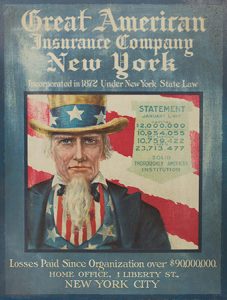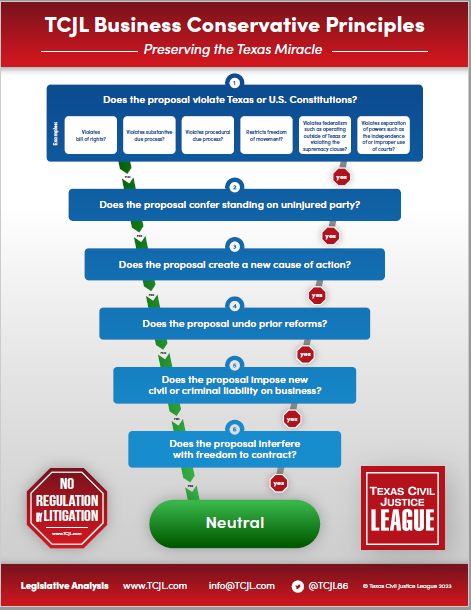 A divided Austin Court of Appeals has affirmed a trial court order denying a surety’s Rule 91a motion to dismiss on the basis that a county’s claim for performance on the bond was statutorily time-barred.
A divided Austin Court of Appeals has affirmed a trial court order denying a surety’s Rule 91a motion to dismiss on the basis that a county’s claim for performance on the bond was statutorily time-barred.
Great American Insurance Company of New York v. Williamson County, Texas (No. 03-24-00162-CV; July 24, 2025) arose from a dispute between a surety and Williamson County that resulted from the alleged termination of a public work contract for a park development project. In 2018 the county entered into a contract with a general contractor for the construction of River Ranch County Park Phase 1 Development. The contract price was just over $11 million and required the contractor to secure a performance bond. Great American issued the bond, which specified that the surety would pay up if the owner declared a contractor default, terminated the contract, and notified the surety, provided that the county agreed to pay the balance of the contract price to the surety or to a contractor selected to perform the contract.
In 2022 the project faltered. The county sued the contractor for breach of contract and Great American for failing to perform its obligations under the bond. Great American filed a Rule 91a motion to dismiss on the basis that the county failed fo file suit on the bond within the one-year limitations period prescribed by § 2253.078(a), Government Code. Great American argued that the county terminated the contractor on June 2, 2021 but did not file suit until August 17, 2022. It contended that the accrual of the county’s cause of action occurred when the county terminated the contractor and the contract. The county took the position that the contract was not “terminated” until December 23, 2021, when Great American sent a letter to the county electing to waive its rights under the contract.
The trial court denied Great American’s motion for summary judgment. The trial court denied Great America motion to dismiss, but the court granted Great American’s petition for a permissive appeal on the following question: “whether the termination of a bonded contractor’s right to continued performance constituted termination of the public work contract thereby triggering limitations on a performance bond under [the statute] when the surety’s performance bond is expressly included as part of the ‘public work contract,’ and the summary judgment evidence establishes that the surety’s performance commenced upon termination of the contractor and continued until December 23, 2021.
In an opinion by Justice Crump, the court of appeals affirmed. The parties disputed whether the bond itself was included as part of the contract, and whether notifying Great American of the contractor’s termination constituted “termination” as provided by §n 2253.078(a). The language of the contract referred to “the surety,” “the bond,” and the relationship between the three parties, whereas the bond expressly referred to the contract. Therefore, not only did the contract expressly contemplate the existence of a performance bond, but directly included the bond in its terms. As Justice Crump pointed out, “suretyship—‘involves a tripartite relationship between a surety, its principal, and the bond obligee, in which the obligation of the surety is intended to supplement an obligation of the principal owed to the bond obligee.” Great Am. Ins. v. North Austin Mun. util. Dist. No. 1, 908 S.W.2d 415, 418 (Tex. 1995). Consequently, “a surety’s liability is derivative in nature and depends on the principal’s liability.” Wright Way Constr. Co. v. Harlingen Mall Co., 799 S.W.2d 415, 426 (Tex. App.—Corpus Christi-Edinburg 1990, writ denied). Additionally, Justice Crump went on, the statutory definitions of “prime contractor” and “public work contract” supported “the conclusion that the Contract includes the Bond.” For these reasons, the Court considered the bond and contract in tandem to determine whether and when “termination” occurred.
Turning to the issue of the accrual date, Justice Crump looked to the statute. The court concluded that “termination” in this context cannot possibly refer to the prime contractor’s termination from the project, the county’s notification to Great American of the contract termination, or the county’s demand that Great American honor its obligations under the bond. The contract could not be considered “entirely terminated” in these instances because if this were the case, it would render the county’s termination unconditional, rather than conditioned on the surety’s right to perform and complete the contract. The bond provides two conditions precedent to Great American’s obligations: (1) the county must declare a contractor default, terminate the contract and notify the surety, and (2) agree to pay the remainder of the contract price as stipulated by the contract to surety or their selected contractor. The latter condition did not appear in the record, but common law dictates that the condition must be performed to accrue a cause of action when a condition precedent applies. Cummins & Walker Oil Co. v. Smith, 814 S.W.2d 884, 886 (Tex. App.—San Antonio, 1991, no writ).
According to Justice Crump, “[t]o construe the word ‘termination’ in Section 2253.078—in the context of the Contract, the Bond, and the parties’ intentions expressed therein—to mean merely termination of the Contractor’s employment could result in the absurd situation of a cause of action under the Bond accruing without Great American’s ever being obligated to perform on the Bond.” If the surety were selected to negotiate proposals from new contractors to fulfill the obligation, it would be compelled to enter into another contract entirely. Additionally, the court concludes that if the one-year limitations period began upon termination of the contractor’s employment, even if the durety elected option 1 or 2, (arrange for the contractor to complete the contract or undertake the obligation titself), then the County would be in the predicament of having to file suit against the surety while it was performing its duties under the bond. The relevant trigger in the contract’s language, Justice Crump added, was the termination of the public work contract(emphasis orig.). The two-year limitations period prescribed in the bond, after all, was intended to provide the Great American with ample time to choose an option and carry it out to completion. The court of appeals thus affirmed the trial court’s denial of Great American’s motion to dismiss.
Justice Theofanis dissented. She disagreed with the majority’s determination that the performance bond and the public work contract must be construed as one contract when considering whether and when termination of the public contract occurred. She would have held that the termination date for purposes of triggering the limitations period in the bond was June 2, 2021, the date the county terminated the contractor from the project and made its demand on Great American under the bond. “In my view,” she wrote, “holding otherwise turns a statute of limitations intended to create clarity into a fact-specific inquiry that turns on the attachments to the public work contract—which the surety has no control over since it is not a party to the agreement.” Requiring the court first determine whether the public work contract incorporates other agreements before deciding the accrual date on the performance-bond claim “is inconsistent with the plain language of the statute and the way in which this statute has been interpreted.”
The split in the court of appeals obviously makes this case a likely candidate for SCOTX consideration. We’ll see what Great American does next.
TCJL Intern Satchel Williams researched and prepared the first draft of this article.












